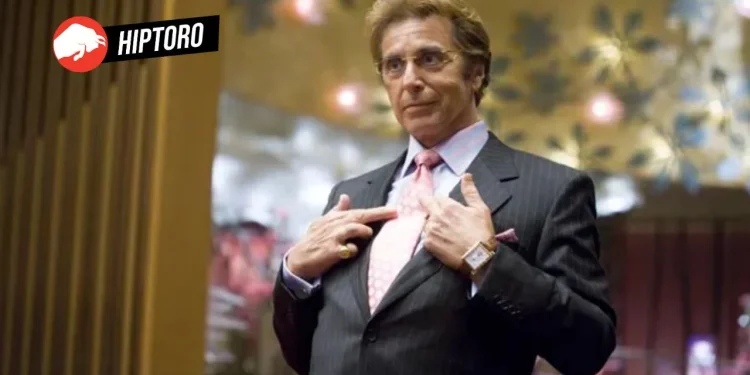Al Pacino, a name synonymous with formidable acting prowess, versatility, and an indelible influence on the landscape of American cinema, has graced the silver screen with performances that have not only defined a generation but have also etched themselves into the annals of film history. His journey through the labyrinth of Hollywood has been marked by roles that span the spectrum of human emotion, demonstrating an unrivaled depth of character portrayal.
This article explores the top 10 movies of Al Pacino, delving into the intricate layers of plot, character development, thematic elements, and performances that define these cinematic masterpieces. Additionally, it seeks to unravel the cultural impact and critical reception of each film, weaving comparisons with other notable works in Pacino’s illustrious career.
Through an analysis of these films, we shall chart the evolution of Al Pacino as an actor, highlighting how each movie reflects his growth, versatility, and enduring legacy in Hollywood.
1. The Godfather (1972)
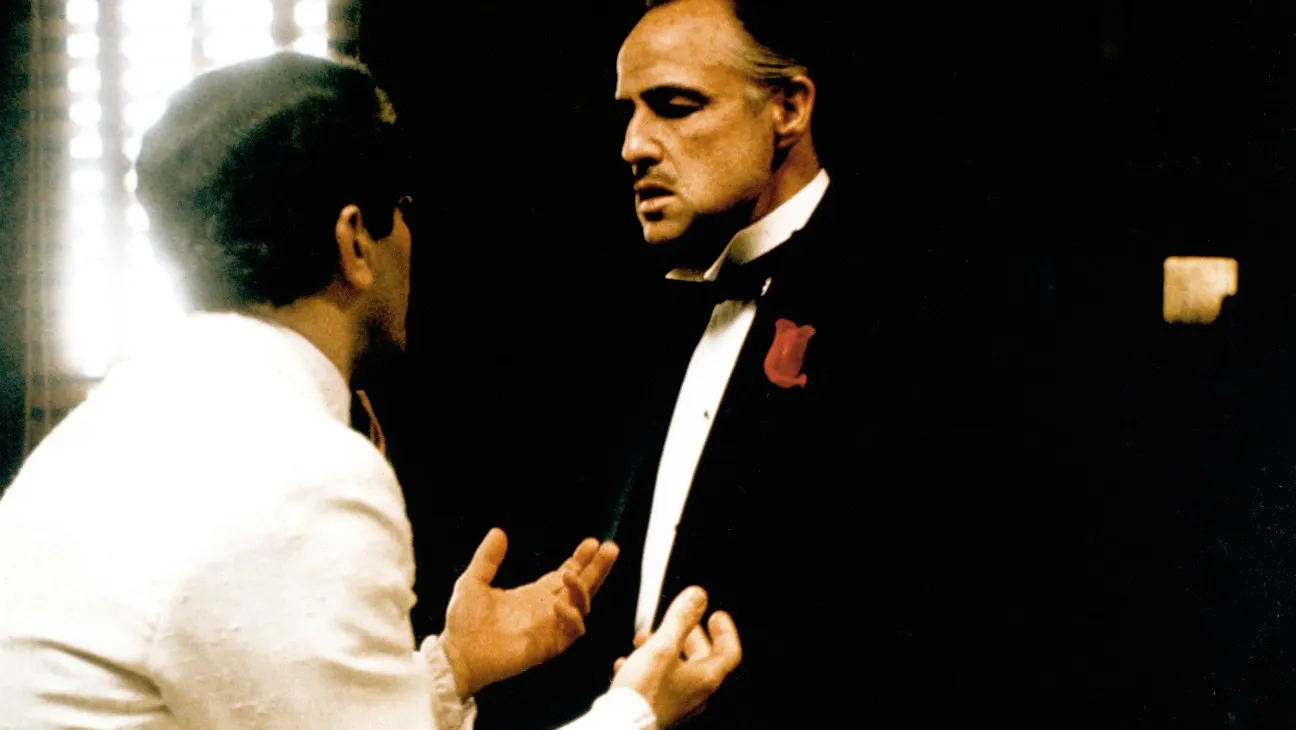
Expanding upon the initial overview, “The Godfather” (1972) not only cemented Al Pacino’s status as a formidable actor but also redefined the gangster genre within American cinema. Directed by Francis Ford Coppola, the film is an adaptation of Mario Pezo’s novel of the same name, offering a sprawling narrative that chronicles the complexities of the Corleone family led by patriarch Vito Corleone, played by Marlon Brando. It is within this intricate web of familial loyalty and criminal enterprise that Al Pacino’s character, Michael Corleone, emerges as a central figure, undergoing a profound transformation that is pivotal to the film’s narrative arc.

Plot and Character Development
Initially, Michael is portrayed as the family’s golden son, a war hero who seeks a life detached from the criminal empire his father has built. However, as circumstances thrust him into the heart of the family’s operations, Michael’s journey from an outsider with moral reservations to a calculating, ruthless leader unfolds with dramatic intensity. This evolution is masterfully depicted by Pacino, whose performance captures the subtle shifts in Michael’s character, from his initial reluctance to his eventual embrace of power.
The complexity of Michael’s character lies in his internal conflict and the choices he makes to protect his family at all costs, which Pacino delivers with a nuanced portrayal that speaks volumes of his character’s depth and the emotional turmoil beneath his stoic facade.
Thematic Elements and Performance
“The Godfather” explores the dichotomy of the American Dream, juxtaposing the Corleone family’s pursuit of success and legitimacy in America against the corrupting influence of power and violence. Through Michael’s ascent to power, the film delves into themes of loyalty, honor, and the moral decay that accompanies the pursuit of absolute authority. Pacino’s performance is integral to the film’s exploration of these themes, offering a complex character whose transformation embodies the corruptibility of the American Dream. His portrayal of Michael’s gradual loss of innocence and descent into moral ambiguity highlights the film’s commentary on the cost of power and the fragility of human integrity under its weight.
Cultural Impact and Critical Reception
Upon its release, “The Godfather” was met with critical acclaim and commercial success, heralded as a masterpiece of American cinema. Pacino’s portrayal of Michael Corleone earned him an Academy Award nomination, and the film itself won three Oscars, including Best Picture. Its impact on popular culture and the film industry is immeasurable, influencing countless films, television shows, and books that followed. The character of Michael Corleone, as brought to life by Pacino, has become an iconic figure, representing the complexities and contradictions of the American experience.
Moreover, “The Godfather” challenged and transformed the gangster genre, setting a new standard for storytelling, character development, and cinematic technique. It offered a humanized portrayal of the mafia, focusing on the family at the heart of the crime syndicate and presenting their criminal activities as part of their struggle to achieve the American Dream. This nuanced portrayal of organized crime and the emphasis on character and narrative depth has inspired a generation of filmmakers and storytellers.
The cultural significance of “The Godfather” extends beyond its narrative and technical achievements. The film has permeated American culture, contributing to the mythology surrounding the mafia and influencing the public’s perception of organized crime. Its lines and scenes have become part of the cultural lexicon, and its influence is seen in various aspects of media and entertainment. The legacy of “The Godfather” is a testament to its enduring relevance and the timeless nature of its story and characters, with Al Pacino’s Michael Corleone standing as a pillar of cinematic history.
2. Scarface (1983)
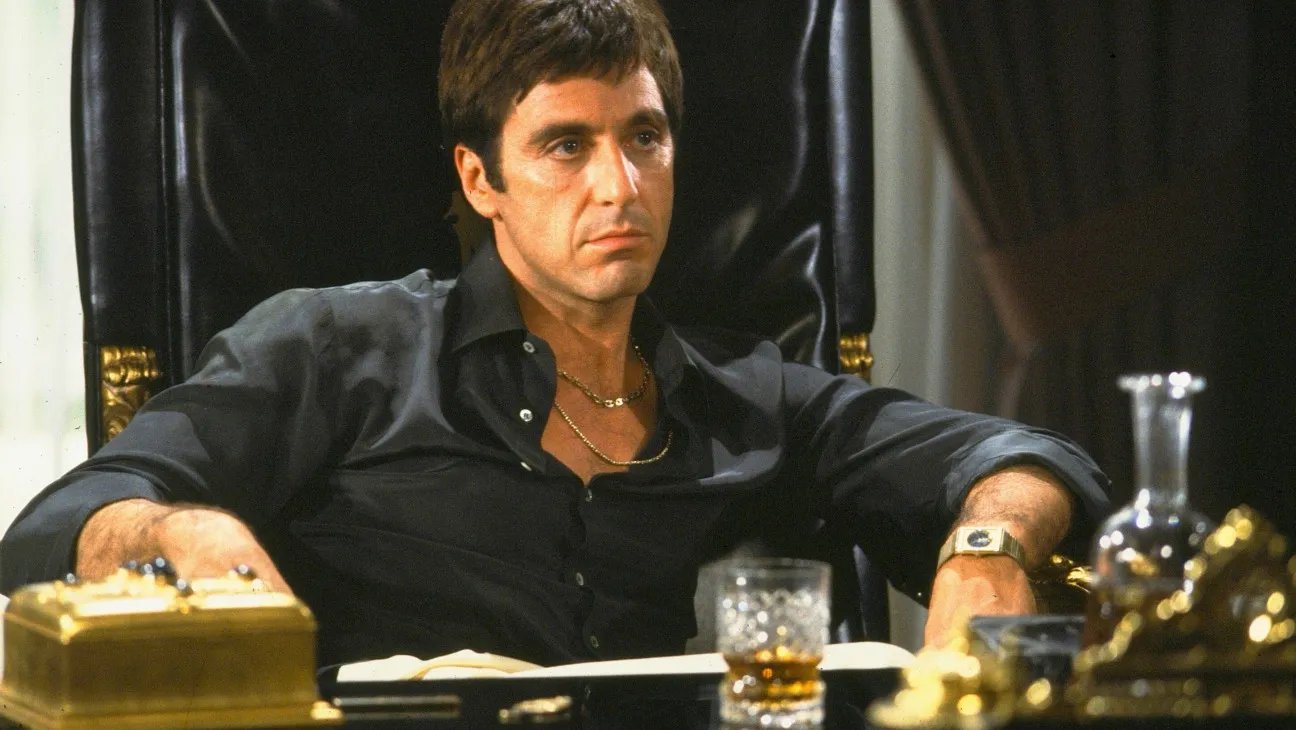
Plot and Character Development: “Scarface” tells the story of Tony Montana, a Cuban refugee who arrives in Miami with nothing and rises to become a powerful drug lord. Directed by Brian De Palma and written by Oliver Stone, this film presents a stark portrayal of ambition, power, and downfall. Al Pacino’s portrayal of Tony Montana is intense and raw, capturing the essence of a man consumed by his own greed and hubris. The character’s journey from an ambitious immigrant to a paranoid and isolated kingpin is depicted with a compelling arc that explores the dark side of the American Dream.
Thematic Elements and Performance: “Scarface” dives deep into themes of excess, corruption, and the quest for power. It explores the destructive impact of the drug trade and the illusion of the American Dream, where success at any cost is often glorified. Pacino’s performance is central to the film’s exploration of these themes, offering a glimpse into the psyche of a man who becomes a prisoner of his own empire. His portrayal of Tony Montana’s relentless ambition and eventual spiral into madness is both terrifying and mesmerizing, highlighting the actor’s ability to embody complex characters.

Cultural Impact and Critical Reception: Upon its release, “Scarface” received mixed reviews from critics but has since gained a cult following and is regarded as one of the best crime films ever made. Its impact on popular culture is significant, with Tony Montana becoming an iconic character in cinema, symbolizing the ultimate rise and fall story. The film’s explicit violence and memorable quotes have made it a cultural landmark, influencing a wide range of media, from music to video games. “Scarface” remains a powerful commentary on the corrupting nature of power and the American Dream turned nightmare.
3. Dog Day Afternoon (1975)
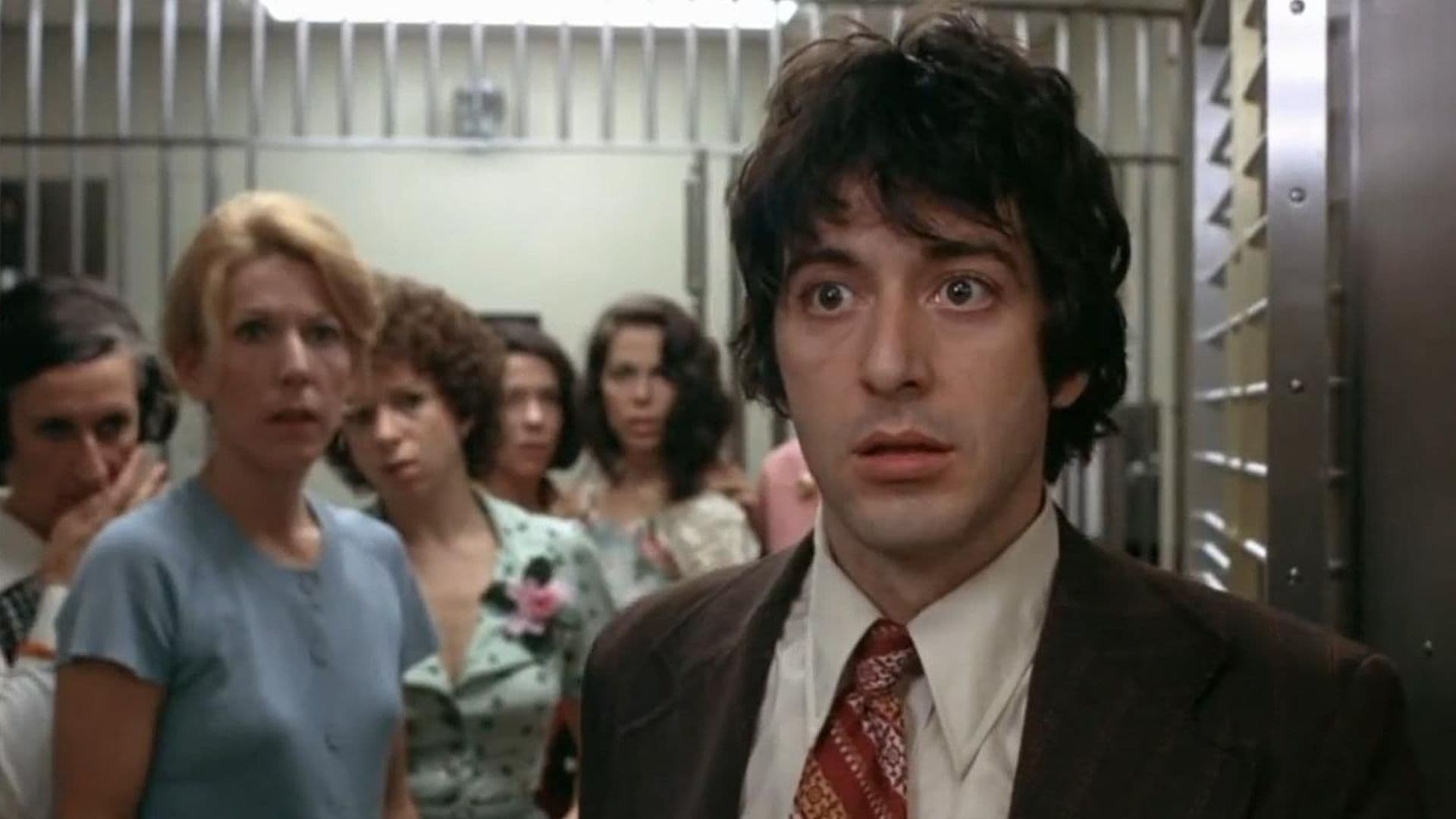
Plot and Character Development: Directed by Sidney Lumet, “Dog Day Afternoon” is based on the true story of a bank robbery gone wrong in Brooklyn. Al Pacino plays Sonny Wirdzek, a complex character driven to rob a bank to pay for his lover’s gender reassignment surgery. The film is a gripping portrayal of a heist that unfolds into a media circus and a public spectacle. Pacino’s performance as Sonny is nuanced, blending desperation with moments of compassion and humanity, showcasing his ability to bring depth to challenging roles.
Thematic Elements and Performance: The film explores themes of media sensationalism, the American justice system, and LGBTQ+ rights, ahead of its time in addressing such issues. Pacino’s portrayal of Sonny’s desperation and moral ambiguity provides a poignant commentary on the lengths to which people will go for love and survival. His interaction with the hostages, police, and the gathering crowd offers a multifaceted look at a man caught in an impossible situation.

Cultural Impact and Critical Reception: “Dog Day Afternoon” was critically acclaimed for its direction, screenplay, and Pacino’s performance, earning several Academy Award nominations. The film is celebrated for its tension-filled narrative and its sympathetic portrayal of marginalized characters, contributing to the conversation around LGBTQ+ issues in the 1970s. Its depiction of a media frenzy around a criminal event also presaged the growing influence of televised news on public perception.
4. Serpico (1973)
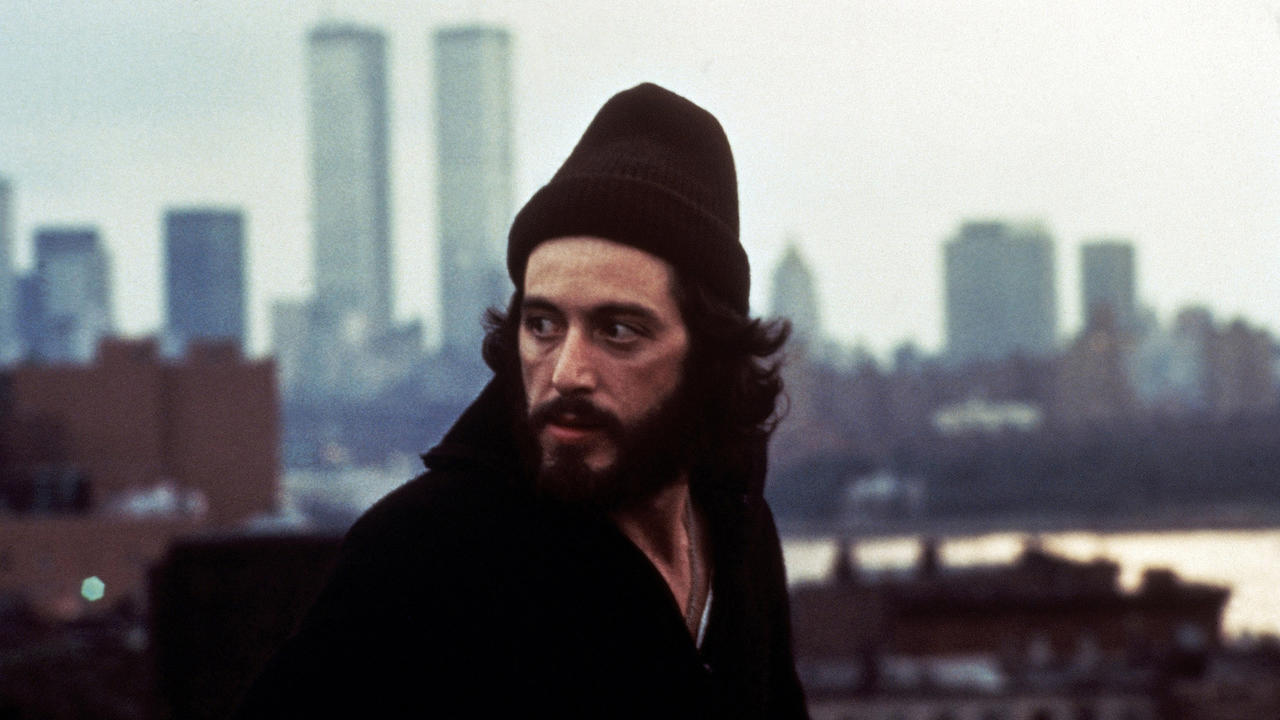
Plot and Character Development: “Serpico” stars Al Pacino as Frank Serpico, a New York City police officer who exposed corruption within the police force. The film chronicles Serpico’s struggle against systemic corruption, risking his life and career in the process. Pacino’s portrayal of Serpico is a study in integrity and perseverance, capturing the emotional and physical toll of standing up against injustice. His performance is both powerful and inspirational, highlighting Serpico’s commitment to his principles in the face of overwhelming opposition.
Thematic Elements and Performance: The film delves into themes of ethics, integrity, and the challenges of fighting systemic corruption. Pacino’s portrayal of Serpico’s isolation and determination brings a human dimension to the discussion of police corruption, making a compelling case for the importance of whistle-blowers in maintaining the moral compass of law enforcement.

Cultural Impact and Critical Reception: “Serpico” was met with critical acclaim, further establishing Al Pacino as a leading actor in Hollywood. The film’s impact goes beyond its cinematic achievements, contributing to the national dialogue on police corruption and the importance of integrity. It has inspired countless individuals to stand up for what is right, regardless of the personal cost.
For each of these films, Al Pacino delivered performances that were not only memorable but also transformative, contributing to the cultural lexicon and leaving an indelible mark on cinema. His ability to embody such varied characters, from Tony Montana’s tragic ambition to Frank Serpico’s unwavering integrity, showcases his range and depth as an actor. These films not only reflect Pacino’s growth and versatility but also his profound impact on the landscape of American cinema.
Continuing with the depth and breadth of analysis for Al Pacino’s most impactful films, we move forward to explore additional titles that showcase his versatility and depth as an actor. Each film not only highlights Pacino’s talent but also his ability to delve into complex characters, reflecting his evolution and his influence on cinema.
5. The Godfather Part II (1974)
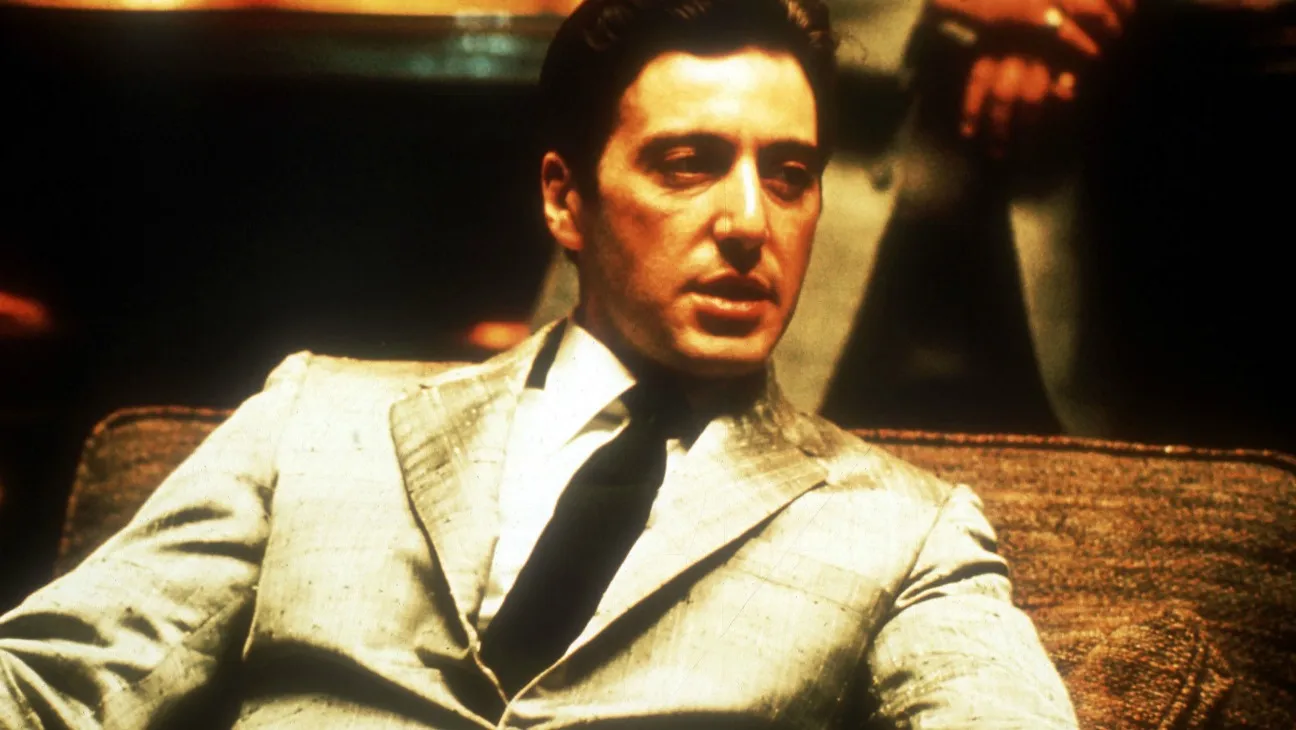
Plot and Character Development: In this sequel and narrative prequel to “The Godfather,” Al Pacino reprises his role as Michael Corleone, now the don of the Corleone mafia family. “The Godfather Part II” further explores Michael’s consolidation of power and the toll it takes on his soul and family. Pacino delivers a performance that is both chilling and tragic, capturing Michael’s transformation into a leader whose cold and calculated decisions are a far cry from the reluctant hero we first met. His portrayal is a delicate balance of power, vulnerability, and isolation.

Thematic Elements and Performance: The film deepens the exploration of themes such as power, loyalty, and the corrupting nature of absolute authority. Pacino’s nuanced performance highlights the personal sacrifice and moral compromises Michael endures, offering a commentary on the cost of power and the loss of personal integrity.
Cultural Impact and Critical Reception: “The Godfather Part II” is considered one of the greatest films in world cinema, further cementing Al Pacino’s legacy as one of the finest actors of his generation. The film received critical acclaim and numerous awards, including six Academy Awards. Its narrative complexity and Pacino’s performance have influenced countless films and actors, making it a pivotal moment in cinematic history.
6. Glengarry Glen Ross (1992)
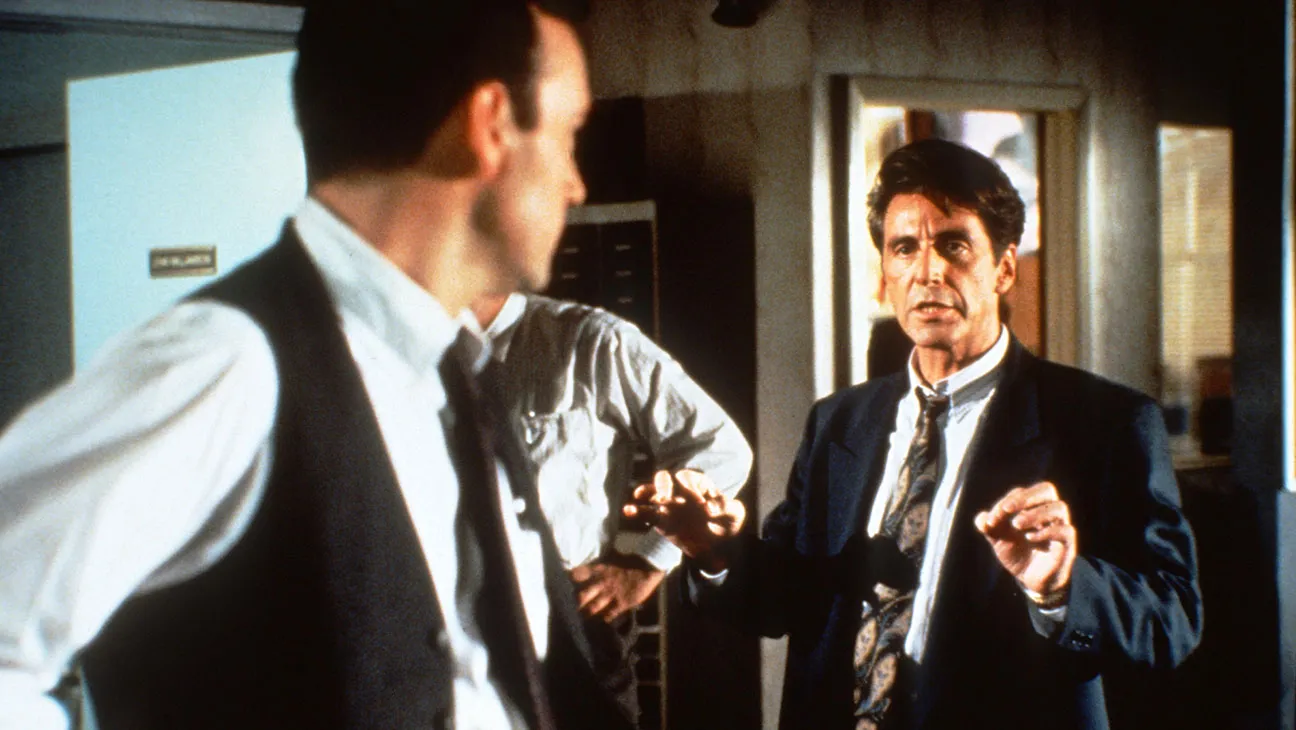
Plot and Character Development: In this adaptation of David Mamet’s Pulitzer Prize-winning play, Pacino plays Ricky Roma, a slick, successful real estate salesman. Unlike his other roles, Pacino’s character here is smooth-talking and persuasive, yet deeply cynical. His portrayal of Roma adds a layer of complexity to the film’s examination of the cutthroat nature of sales and the desperation it breeds.
Thematic Elements and Performance: “Glengarry Glen Ross” delves into themes of desperation, ethical compromise, and the brutal realities of the business world. Pacino’s performance stands out in a powerhouse ensemble cast, highlighting his character’s manipulation skills and moral ambiguity. His role earned him an Academy Award nomination, underscoring his ability to command attention in a highly collaborative environment.

Cultural Impact and Critical Reception: The film is renowned for its sharp dialogue and the intense performances of its cast. Pacino’s role as Ricky Roma is often cited as one of his best, showcasing his ability to navigate complex dialogue and character dynamics. The film has become a reference point for discussions about sales culture and the American Dream.
7. Heat (1995)
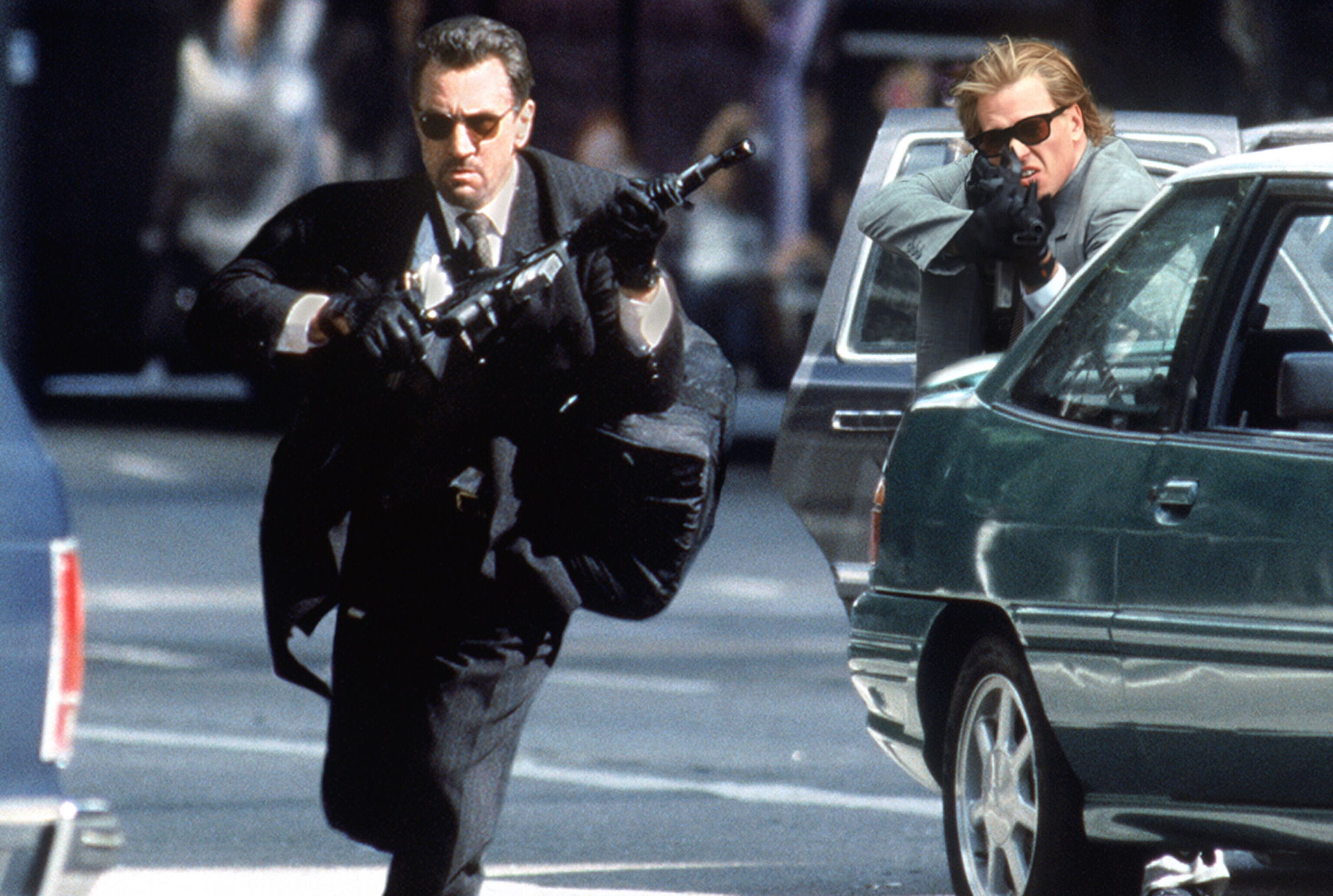
Plot and Character Development: In Michael Mann’s “Heat,” Pacino plays Lt. Vincent Hanna, an obsessive detective on the trail of a professional thief (Robert De Niro). This film offers a cat-and-mouse game between two experts in their fields, with Pacino providing a compelling portrayal of a man consumed by his work to the detriment of his personal life.
Thematic Elements and Performance: The film explores themes of obsession, loneliness, and the parallels between cop and criminal. Pacino’s intense performance as Hanna showcases his ability to portray complex, driven characters whose dedication to their profession overshadows their personal happiness.

Cultural Impact and Critical Reception: “Heat” is celebrated for its realistic portrayal of crime, meticulous attention to detail, and the on-screen dynamic between Pacino and De Niro. Pacino’s role further solidified his position as an actor capable of delivering powerful performances in crime dramas. The film has influenced numerous heist movies and TV shows, particularly in its depiction of the criminal investigation process.
8. The Insider (1999)
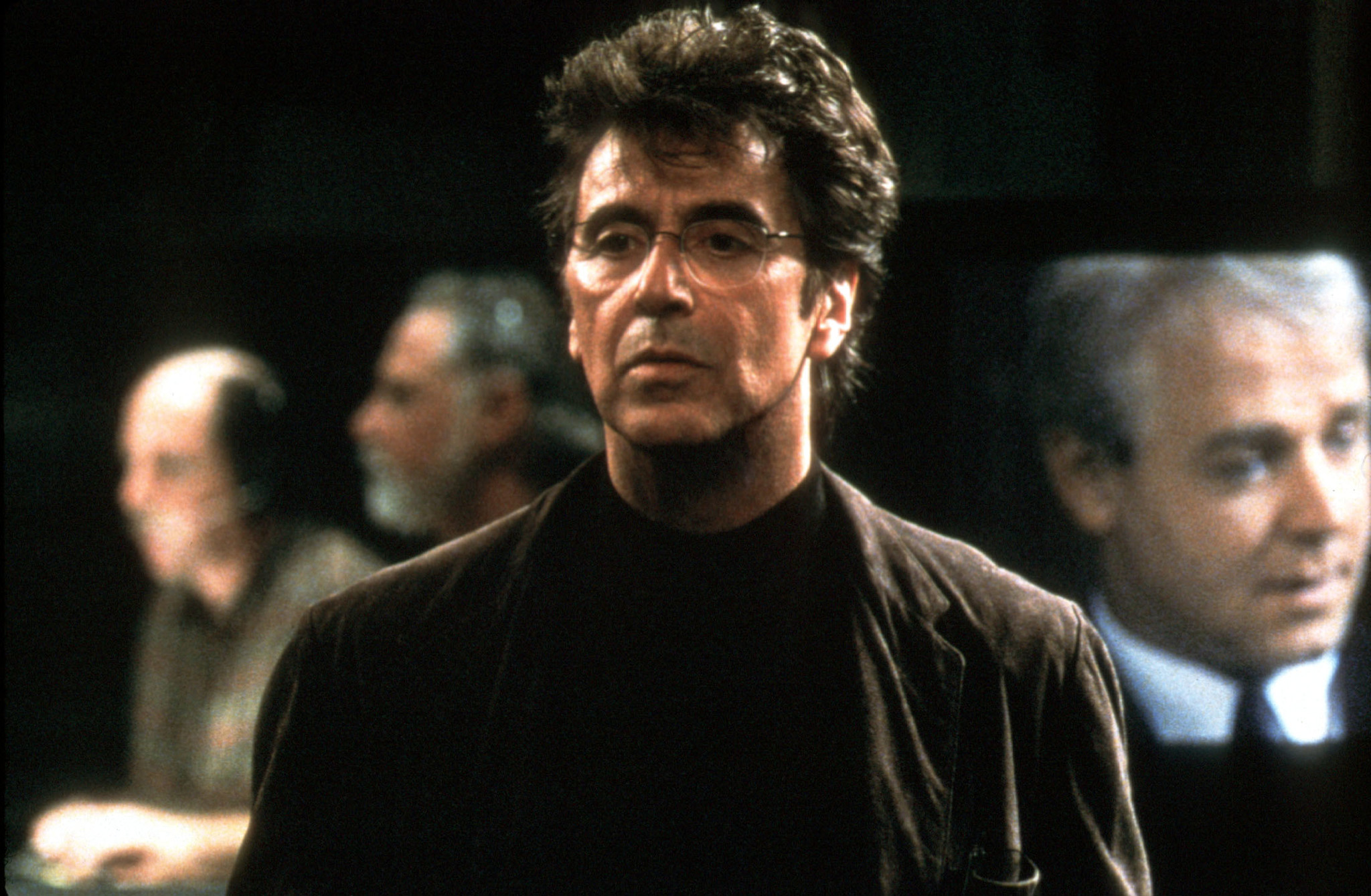
Plot and Character Development: In this true story, Pacino plays Lowell Bergman, a “60 Minutes” producer who uncovers a major tobacco industry scandal. His portrayal of Bergman is a departure from his gangster roles, focusing instead on the ethical dilemmas and challenges of investigative journalism.
Thematic Elements and Performance: “The Insider” addresses themes of integrity, corporate power, and the struggles of whistleblowers. Pacino’s performance is a nuanced depiction of a man fighting to reveal the truth in the face of immense pressure. His role highlights the importance of journalistic integrity and the impact of individual courage against corporate malfeasance.

Cultural Impact and Critical Reception: The film was critically acclaimed, with Pacino’s performance earning him praise for his ability to portray a complex, real-life figure with depth and empathy. “The Insider” is regarded as an important film about the power of the media and the ethical responsibilities of journalists.
9. Scent of a Woman (1992)
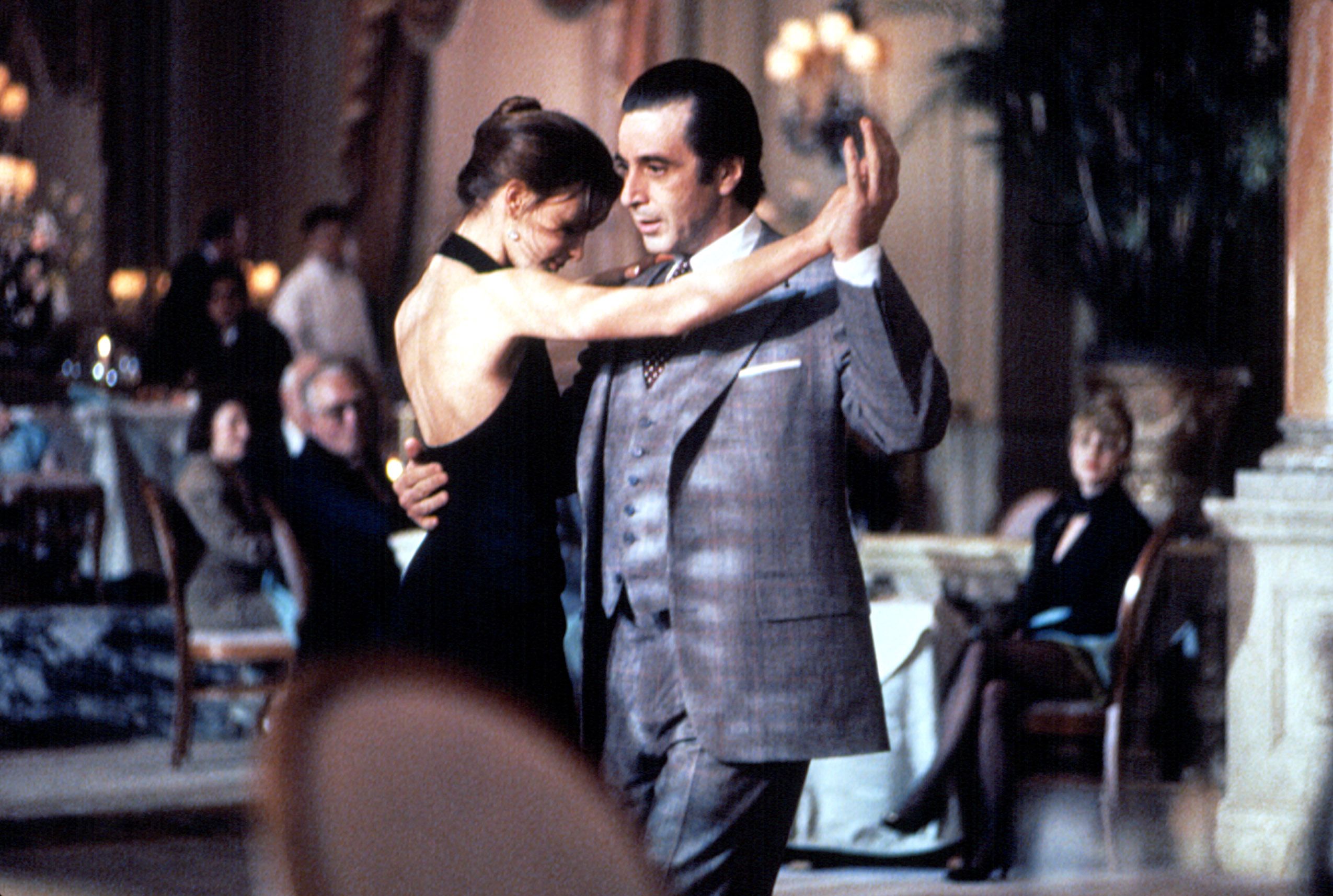
Plot and Character Development: In this drama, Pacino takes on the role of Lieutenant Colonel Frank Slade, a blind, retired Army officer. This film showcases Pacino’s range, as he portrays a character who is both brash and vulnerable, bitter about his blindness yet capable of moments of profound insight and tenderness.
Thematic Elements and Performance: “Scent of a Woman” explores themes of redemption, integrity, and the unlikely friendships that can change our lives. Pacino’s performance, which won him his first and only Academy Award for Best Actor, is a tour de force, filled with explosive emotional moments and subtle displays of vulnerability. His portrayal of Slade’s transformation throughout the film is both inspiring and deeply moving.

Cultural Impact and Critical Reception: The film was a critical and commercial success, with Pacino’s performance hailed as one of the highlights of his career. “Scent of a Woman” has become known for its powerful monologues and the dynamic between Pacino’s character and the young prep school student tasked with caring for him. The film’s impact lies in its message of redemption and the value of seeing people beyond their disabilities.
10. Carlito’s Way (1993)
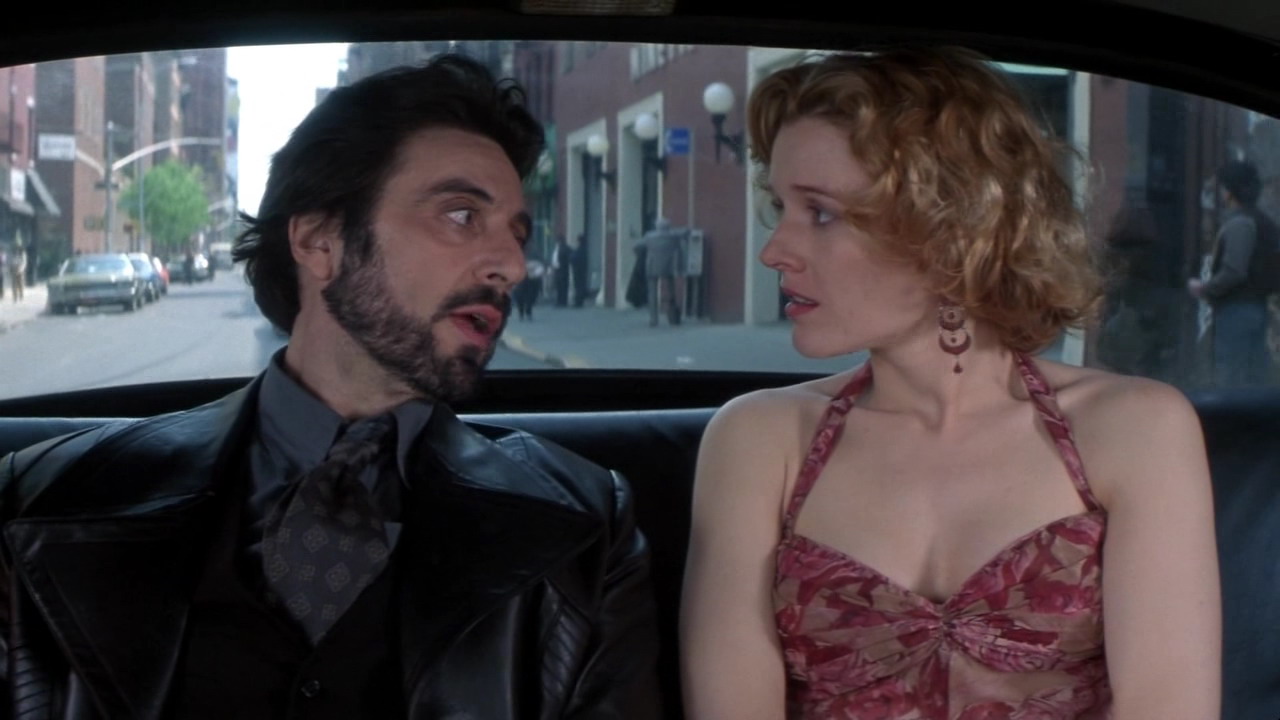
Plot and Character Development: In “Carlito’s Way,” Pacino plays Carlito Brigante, a former criminal trying to escape his past and start anew. This film reunites Pacino with director Brian De Palma, offering a nuanced portrayal of a man caught between his desire for a better life and the pull of his old ways.
Thematic Elements and Performance: The film explores themes of redemption, fate, and the struggle to change one’s life. Pacino’s performance captures the complexity of Carlito’s character, balancing toughness with vulnerability. His portrayal of Carlito’s internal conflict and his ultimately tragic fate is both compelling and heartbreaking.

Cultural Impact and Critical Reception: While not as immediately celebrated as some of Pacino’s other roles, “Carlito’s Way” has gained appreciation over time for its character-driven narrative and Pacino’s performance. The film is now considered a classic in the crime genre, praised for its storytelling, atmospheric direction, and the depth of its central character.
These films, each a milestone in Al Pacino’s career, underscore his remarkable versatility as an actor and his profound impact on the landscape of American cinema. From crime lords to police detectives, and from blind retired officers to desperate bank robbers, Pacino has brought to life a wide array of memorable characters, each with their own distinct story and emotional depth. His contributions to cinema not only highlight his exceptional talent but also his dedication to exploring the complexities of the human condition through his craft.
Al Pacino’s contribution to cinema is monumental, not only for the awards and nominations he has received but also for the lasting impact his performances have had on audiences and filmmakers alike. His roles have become a study in the art of acting, combining intense preparation with an instinctual ability to inhabit his characters fully. Throughout his career, Pacino has offered a masterclass in acting that continues to influence both his contemporaries and actors of future generations.
Reflecting on his cinematic journey, it’s evident that Pacino’s legacy is defined by his commitment to exploring the human condition in all its facets. Whether portraying the ruthless ambition of a gangster or the moral dilemma of a whistleblower, he has consistently delivered performances that resonate with authenticity and emotional depth. His work stands as a beacon for those who aspire to convey the complexity of human emotions and the intricacies of life’s moral quandaries.
As we conclude this exploration of Al Pacino’s top 10 movies, we’re reminded of the power of film as a medium to reflect, critique, and celebrate the human experience. Pacino’s roles have not only entertained but also challenged audiences to ponder deeper questions of morality, identity, and the pursuit of the American Dream. His enduring influence on cinema serves as a testament to his talent, dedication, and the indelible characters he has brought to life on the silver screen.
In honoring Al Pacino’s contributions to film, we recognize the artistry and passion that define his storied career. His journey in Hollywood serves as an inspiring reminder of the impact one individual can have in shaping the narrative and emotional depth of cinema. Al Pacino’s legacy in film is a rich tapestry of complex characters, memorable performances, and a testament to the enduring power of storytelling.


